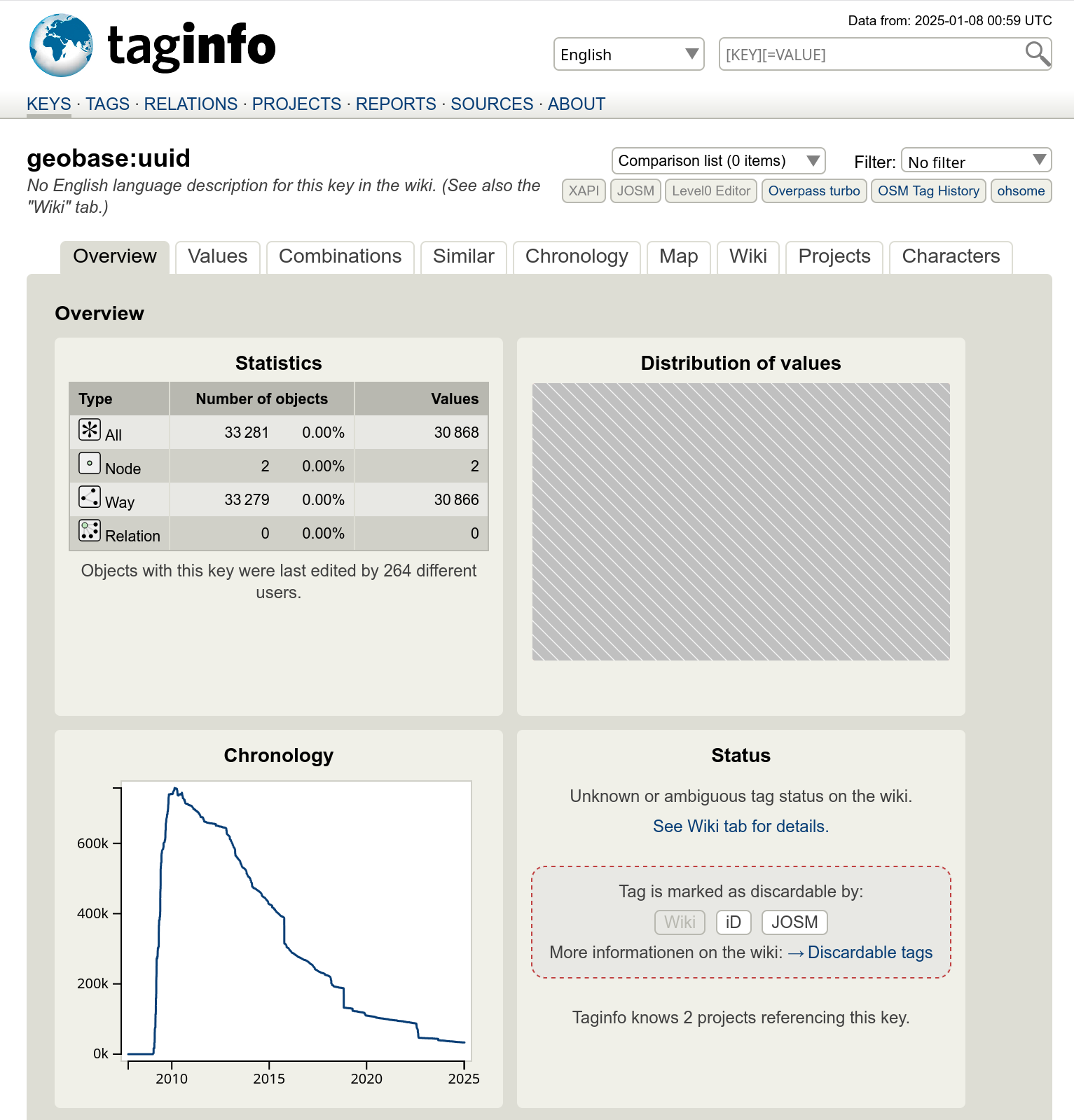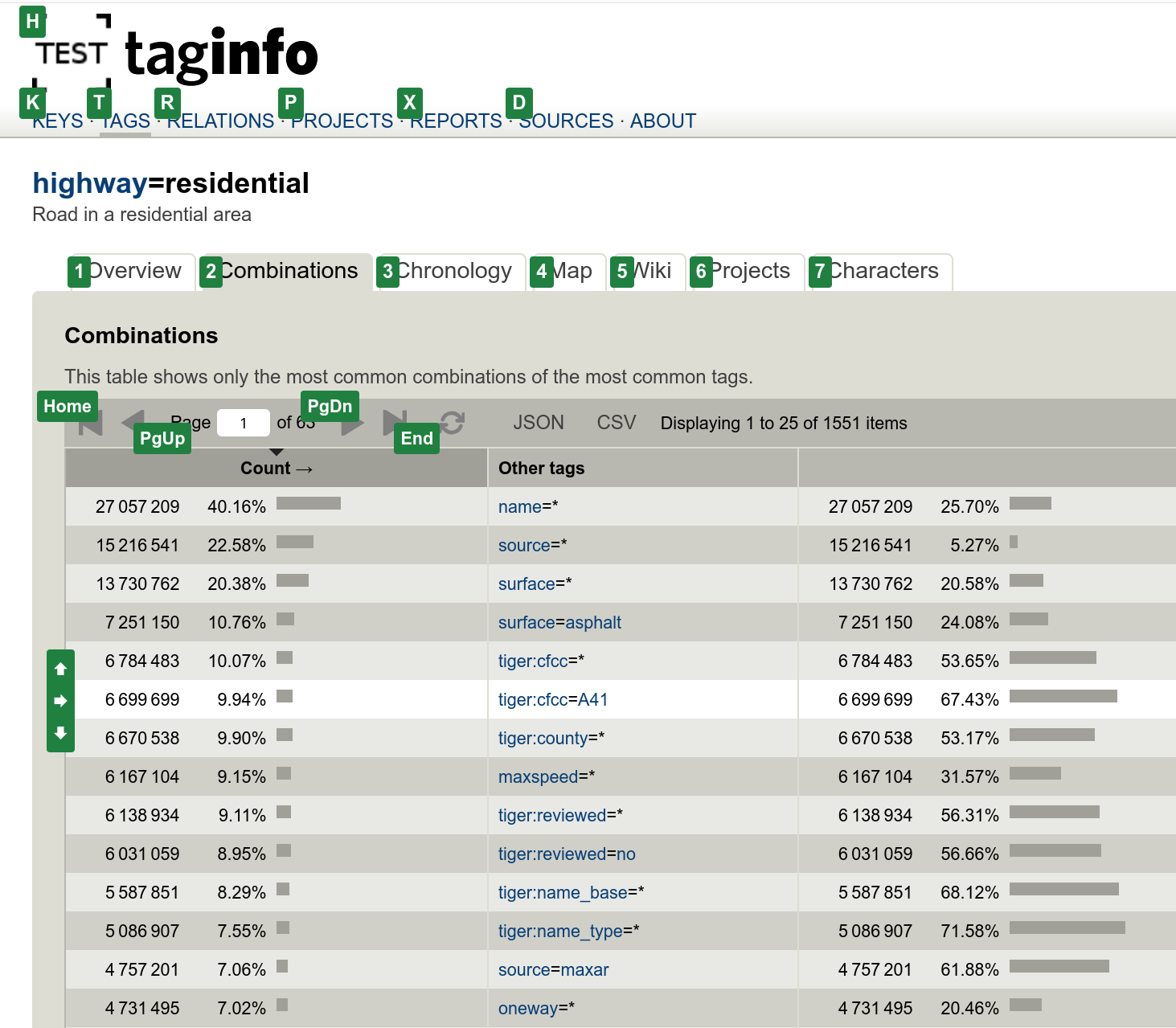![[JT]](https://www.jochentopf.com/img/jtlogo.svg) Jochen Topf's Blog
Jochen Topf's Blog
Once a year or so I set aside some time to work on taginfo. Then I start working on it and find more and more things that I want to work on and invariably it takes longer than planned. And there is always much more to do that I don’t get to. But I did get some interesting things done this time around…
OSM wiki pages about keys and tags show a Tag status for many tags. The status is somewhat fuzzy, which one of the about 10 common values a tag should have is not always so clear, and sometimes wiki pages for different languages show different values. But thanks to a lot of work from a lot of people the state of the wiki documentation has improved a lot over the years and this information is now better maintained and quite useful.
Taginfo has always parsed out this status information from the wiki pages but not done anything with it. But now it does. On key pages the Overview tab now shows a “Status” box which shows the status from the wiki, or it might tell you that the status is unknown or ambiguous (if there is a disagreement between different language wiki pages). I created a new “look” for the status badge which uses the same colors as the wiki for some of the status values.
There are probably more places where we want to show that status, not only on the “key” pages, but also the “tag” pages and some others. But I’ll leave that for some later time.
You can also get an overview about all the keys and tags and their status on the Tag status page on taginfo. This shows statistics about all the status values, lists of keys and tags, and also special tables showing which keys and tags have inconsistent status values in different languages.
Which brings me to the next topic: There is a lot of information in the wiki. Taginfo can’t known what information is correct or not, but it can flag some problems with the data, inconsistencies it finds, or, for instance, all the images used to document keys and tags that are quite large and so need a long time to load.
The Wiki source section on taginfo now collects a lot of such information to help wiki maintainers with their job. Some of what’s shown there is new, some has been available in reports or taginfo-internal pages before. I hope this will be useful for somebody.
There is one somewhat special tag status called “discardable”. Tags with this status have been found not to be useful and some editors remove these tags automatically and silently when OSM objects are edited. That way the data will sooner or later be removed from OSM without any huge automated edit.
Taginfo now reads the configuration from the iD and JOSM editors to find out which tags they think of as discardable as well as the tag status information from the wiki. A new report shows this information which could be especially useful for editor developers and wiki maintainers.
And in the mentioned “Status” box on the key pages, this information will also be highlighted.

Most tables shown on taginfo have a “JSON” button in the header which links to a URL for downloading the data shown in the table. You don’t have to read the API docs, just use that link, maybe change the parameters a bit and get to the data that’s in that table.

Using JSON is great for many use cases, but in some cases it is still somewhat cumbersome. A user had asked for CSV export, so I implemented that also. Most tables now also have a “CSV” button. So it is really easy to, say export some data to CSV, load it into LibreOffice and create some chart.
There probably aren’t many people using the keyboard shortcuts that taginfo provides. But they can be quite useful for experienced users. But who can remember them all?

There is now a new feature: You can press and hold the question mark (?) key on any page and taginfo will show you which shortcuts there are and what links on that page they are a shortcut for. Not the most important thing, but it was fun to work on that, fiddle around and see how to best do that.
Tags: openstreetmap · taginfo